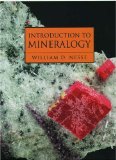|
Introduction to Mineralogy
Introduction to Mineralogy is a modern, introductory mineralogy book that provides detailed descriptions of over 100 minerals. It discusses classical crystallography, chemical bonding, controls on mineral structure, mineral stability, and crystal growth, providing readers with a solid foundation to help them better understand the nature and occurrence of minerals. |
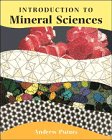
|
Manual of Mineral Science (Manual of Mineralogy)
The classic in the field since 1848, this extraordinary reference offers readers unsurpassed coverage of mineralogy and crystallography. The book is known for integrating complete coverage of concepts and principles with a more systematic and descriptive treatment of mineralogy. The revised edition now includes a CD-ROM to let readers see the minerals and crystals, while also viewing chemical composition, symmetry, and morphological crystallography. |
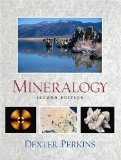 |
Mineralogy (2nd Edition)
This learner-oriented text is written in a casual, jargon-free style to present a modern introduction to mineralogy. It emphasizes real-world applications and an “outside-in approach” as well as the history and human side of mineralogy. Chapter topics include elements and minerals; crystallization and classification of minerals; mineral properties: hand specimen mineralogy; optical mineralogy; igneous rocks and silicate minerals; sedimentary minerals and sedimentary rocks; metamorphic minerals and metamorphic rocks; ore deposits and economic minerals; crystal morphology and symmetry; crystallography; units cells, points, lines, and planes; x-ray diffraction; atomic structure; and descriptions of minerals. For individuals interested in the science of mineralogy, and how minerals impact everyday life. |
 |
Introduction to Optical Mineralogy, Third Edition and An Atlas of Minerals in Thin Section: Book & CD Pack
Every advanced undergraduate in geology must learn how to use a microscope to study rocks and minerals.This well-written, lucid introduction to optical mineralogy combines in one volume both an easy-to-follow explanation of optical theory and a clear detailed description of rocks and minerals. In addition, the author provides an appendix on sample preparation and a useful set of identification tables. A well-written, comprehensive introduction to optical mineralogy. |
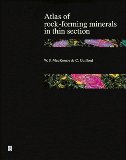 |
Atlas of Rock-Forming Minerals in Thin Section
Illustrates, in full color, the appearance of common rock-forming minerals as seen in thin section under the polarizing microscope. Designed as a laboratory manual for use with a standard mineralogy text. Contains over 200 photomicrographs, short chemical descriptions, and summaries of the optical properties of the various minerals. Photographs carefully chosen to depict features by which minerals may be recognized most easily.. |
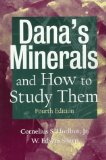 |
Dana's Minerals and How to Study Them (After Edward Salisbury Dana), 4th Edition
This short, practical guide to the identification of hand specimen minerals utilizes simple methods of observation and inexpensive tools. It gives a guidline on how to collect minerals as well as a tone and language that evoke the charm of an earlier scientific era. A companion volume to the newly revised Dana's New Mineralogy, this book will reward the student of nature seeking an introduction to minerals and their identification. |
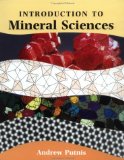 |
An Introduction to Mineral Sciences
The subject of mineralogy has moved away from the systematic treatment of mineral groups toward the study of the behavior of minerals in response to geological processes. It is vital that we understand the physics and chemistry of minerals as this response generally involves structural and chemical changes within individual minerals as well as reactions between minerals. This is the first text to provide an introduction to modern mineralogy for undergraduate students. The main, and often complex, concepts required to understand minerals and the processes that take place within them are presented in an easy to follow manner without any complex mathematical treatment. The book deals with solid-state transformations in minerals, which take place in response to changes in temperature and pressure, as well as introducing the basic crystallography, physics and chemistry needed to understand these processes. No knowledge of physics, chemistry and mathematics beyond high-school level is assumed. |

|
Proceedings of the 10th International Congress for Applied Mineralogy
This book comprises 96 peer-reviewed contributions submitted to the 10th ICAM Congress, held in Trondheim, Norway on 01-05 August 2011. Themes covered include: 1) Advanced materials, including high-performance technical ceramics and glasses, 2) Analytical techniques, instrumentation and automation, 3) Bio-mimetic mineral materials, medical mineralogy, 4) Construction materials including cement/SCMs, concrete, bricks, tiles, screeds, 5) Cultural heritage, stone artifacts and preservation, 6) Environment and energy mineralogy, including CO2 sequestration, 7) Geometallurgy and process mineralogy, and 8) Industrial minerals including gems, ore minerals, and mineral exploration. |


 - Miskloc, Hungary, 2012
- Miskloc, Hungary, 2012



